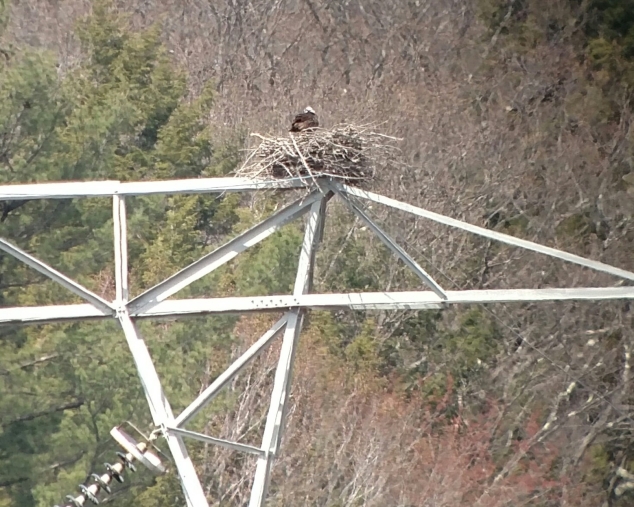
High summer is the perfect time to notice and identify the ferns that abound. If you want to harvest and eat fiddleheads, now is the time to look for ostrich ferns. They are one of the largest ferns in the northeast. Look for a bunch of graceful, tall, erect, ferns arching outward in a vase shape from the rhizome at its base. Then, confirm that it’s an ostrich fern by checking that the dark brown stipe (stem) is deeply grooved in a u-shape near the base.
The next challenge is to remember or mark the location and be able to find it next spring when the fiddleheads emerge.
There has been mixed success with Andover’s loon population in this 2015 season. Donna Baker-Hartwell’s early July report from Highland Lake indicated that the parent loons had deserted their nest.
On Bradley Lake, two chicks hatched successfully and are now undergoing training by their parents. And Donna Crowell reports that the loon parents on Adder Pond have successfully hatched two eggs of their own.
One loony aspect of loons is their ability to disappear quickly from the water’s surface and then suddenly pop up in a new place. In a recent blog post, Mary Holland explained that loons have both lungs and air sacs. They use those sacs to control their depth in the water.
For a long dive they just lower the amount of air in those sacs, reducing their buoyancy sufficiently to stay under the water a long time. Filling the sacs with air gives them high flotation. By deflating the sacs just a little bit, the parent loon can sink down in the water enough to help a chick climb on board!
Bald eagles have made a dramatic return to New Hampshire in the recent past, and a raptor of some kind was gliding over Highland Lake recently. Based on its size and behavior, it could have been a bald eagle or an osprey. Observers did not all confirm seeing the white head and tail which would make it a bald eagle. Some thought they were seeing the dusky head and tail of an immature eagle.
Bald eagles soar with their wings in a flat position, while the wings of ospreys show a distinct kink or crook. Nobody had binoculars to help make a certain identification.
On a visit to the area this spring, Iain MacLeod of the Squam Lakes Natural Science Center confirmed that an osprey pair was nesting on the power line tower southwest of Highland Lake. By late May, it was clear that the nesting attempt failed, but the ospreys have stayed in the vicinity.
Walk at the Heron Rookery
On Saturday, August 8, I’ll be leading a walk around the heron rookery at Fenvale. This is a relatively flat path through the woods and along the edge of the water. We’ll be going slowly, hoping to observe the herons and looking for other wildlife.
A more challenging hike, because of the vertical gain, will occur on Saturday, August 15; a 3.4-mile loop on Ragged Mountain to include a visit to Balanced Rock and the Bulkhead. For more information on either hike, please contact me at AndoverNaturally@nullgmail.com.
The Perseid meteor shower peaks this year on the night of Wednesday, August 12, and the morning of Thursday, August 13. Meteors will radiate from the constellation Perseus but can show up anywhere in the sky.
If the weather cooperates, it should be a great show this year, because the thin crescent moon will be no match for the bright meteors. Best viewing will be from a dark location after midnight.